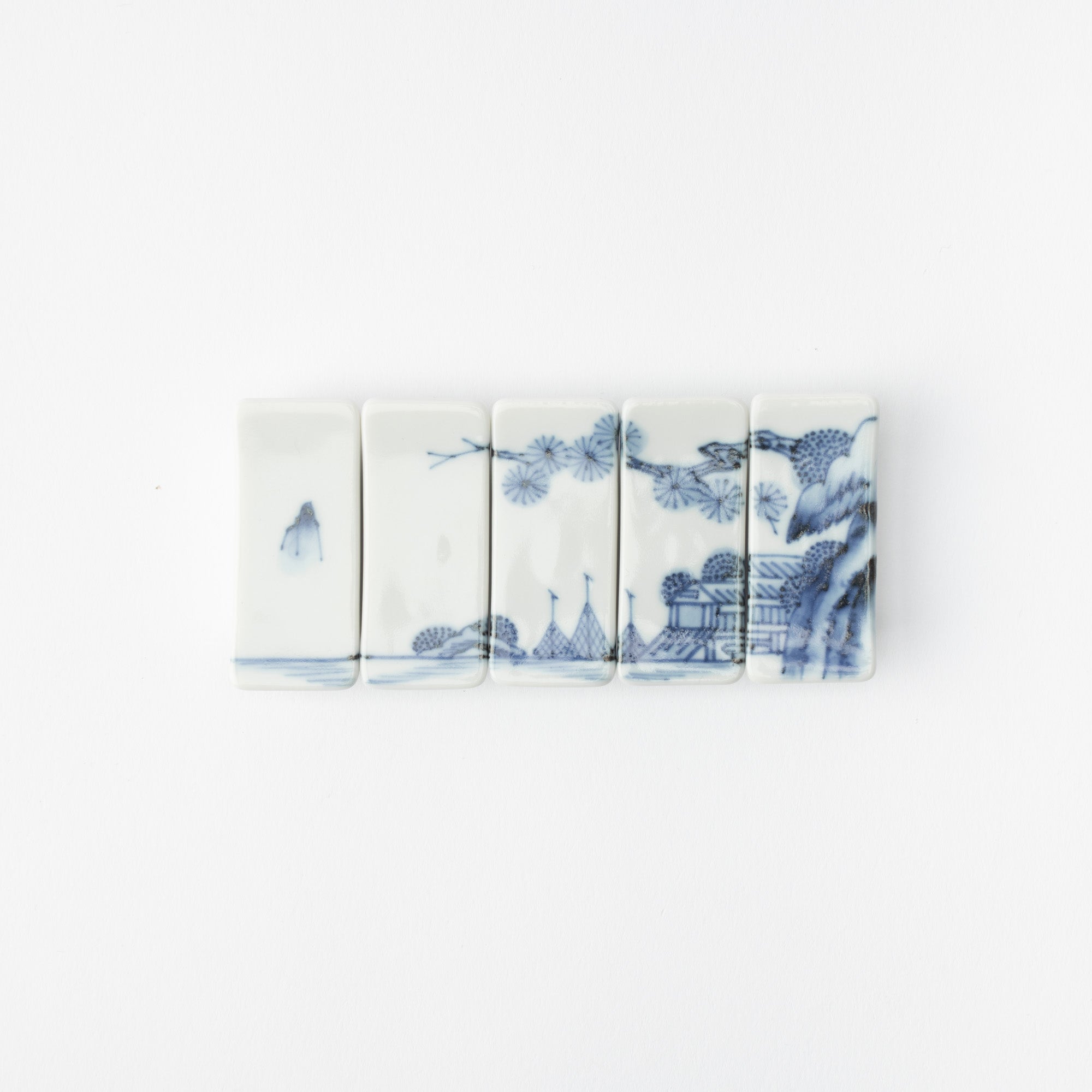





















Choemon Palace and Landscape Kutani Chopstick Rest Set
Estimated Shipping Widget will be displayed here!
A set of five chopstick rests that become one design when put together.
If you put them in order, you can see the representative design of Kutani Choemon called "Roukaku Sansui Mon“(Painting of a Palace and Landscape).
Traditional techniques are combined with a sense of humor that is sure to spark conversation in your daily life.
It is a perfect item for everyday use, for entertaining guests, and as a gift for loved ones.
See more items from our Choemon Kutani ware collection to elevate your table setting.
PRODUCT DETAIL
- Quantity: 5 pcs
- Dimension: 7.1cm(2.8in) x 3.7cm(1.5in) x 0.8cm(0.3in)
- Material: Porcelain - Kutani ware
- Origin: Made in Japan
- Brand: KUTANI CHOEMON
Choose options






















Estimated Shipping Widget will be displayed here!
International Shipping
Multiple International Shipping Options
Discounted shipping for over 500000!
Free shipping for over 5000000!
Insured shipping service
Full compensation for any damage during transit.
Made by Japanese craftsmen
Fair Pricing, free Furoshiki wrapping!

